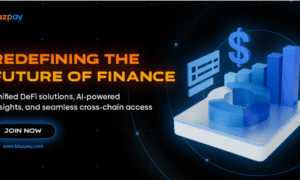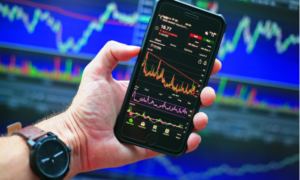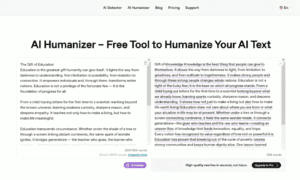The year 2025 is witnessing an unprecedented convergence of artificial intelligence (AI) innovation and escalating cybersecurity challenges, fundamentally reshaping the technology landscape.
Cutting-edge advancements in AI are driving transformative changes across industries, from enhancing operational efficiencies to creating entirely new products and services. Simultaneously, the increasing reliance on interconnected digital systems has amplified cybersecurity risks, necessitating robust and adaptive security measures.
Industry experts are keenly observing how businesses are striving to use AI’s immense potential while proactively addressing the sophisticated cybersecurity threats that accompany this technological revolution. Understanding this balance is crucial for navigating the complexities of the modern tech ecosystem and ensuring sustainable growth in an increasingly interconnected world.
The Dual Revolution: AI Advancements and Cybersecurity Imperatives
As AI moves at breakneck speed, cybersecurity challenges pile up. Widespread adoption means the entire tech ecosystem needs to develop cybersecurity solutions that match new AI-powered business models.
Generative AI Takes Center Stage
Generative AI will rapidly move from a promising concept to a mainstream technology, significantly impacting various sectors in 2025. Google DeepMind announced Gemini 2.0 in December 2024, introducing advanced multimodal capabilities. The model supports multimodal inputs and outputs, including text, images, and audio, and is designed to handle complex tasks with improved reasoning and planning abilities.
These models are optimized for high-volume tasks and complex prompts, showcasing the growing versatility of generative AI.
The Deep Research feature in the Gemini app utilizes advanced reasoning and long-context capabilities to act as a research assistant, exploring complex topics and compiling reports on behalf of the user. This feature enhances the efficiency of information gathering and is available in the Gemini Advanced version.
As generative AI becomes more accessible and powerful, its applications expand, promising to revolutionize workflows and user experiences across numerous industries. This widespread adoption sets new benchmarks for AI’s role in daily operations and strategic innovations within tech industries.
However, the rise of generative AI is not without its challenges, particularly concerning misinformation and misuse.
Moreover, according to a report by Infosecurity Magazine in December 2024, threat actors increasingly employ generative AI in phishing attacks, crafting more sophisticated and harder-to-detect email scams.
The ease with which generative AI can produce realistic but fabricated content underscores the urgent need for robust detection mechanisms and ethical guidelines to mitigate the risks associated with this exciting, powerful technology. As generative AI’s influence expands, the development of responsible AI practices and safeguards is becoming paramount.
Escalating Cybersecurity Threats in the AI Era
As AI technologies advance, so do the sophistication and frequency of cyberattacks, creating a heightened cybersecurity imperative for tech industries in 2025. Cyber fraud incidents are surging, exacerbated by criminals using AI to validate stolen credit card data and bypass traditional fraud prevention systems.
In 2023, consumers reported losing over $10 billion to fraud, marking a 14 percent increase from the previous year. While this statistic underscores a significant rise in fraudulent activities, attributing this entire increase solely to threat actors’ use of AI is not fully supported by available data. However, there is evidence that AI has been increasingly utilized in sophisticated scams, including phishing and deepfake schemes, contributing to the complexity and prevalence of fraud.
Linwei Ding, a former Google software engineer, has been charged with economic espionage for allegedly stealing AI-related trade secrets to benefit Chinese companies. The indictment includes 14 counts, comprising seven counts of economic espionage and seven counts of theft of trade secrets. Ding is accused of misappropriating confidential information about Google’s supercomputing data centers and AI models between May 2022 and May 2023, uploading over 1,000 confidential files. These actions were allegedly intended to assist early-stage Chinese technology companies and reduce Google’s reliance on Nvidia chips.
This incident underscores the importance of implementing stringent security protocols and vigilance against both external and internal threats in the AI sector. The evolving threat landscape necessitates a proactive and adaptive approach to cybersecurity, integrating AI-driven defenses to counter AI-enhanced attacks.
Organizations are recognizing the vital role of AI in bolstering their cybersecurity defenses. According to Washington Technology, AI can identify vulnerabilities and anomalies far more efficiently than human analysts, potentially reducing threat response times from days to minutes.
CyberArk and SentinelOne have integrated their cybersecurity platforms, combining endpoint detection and response with identity security to enhance threat detection through AI-driven analytics. Check Point Software Technologies has also introduced new AI-powered enhancements to its Infinity Platform. It aims to improve zero trust security and threat prevention amid a 44 percent year-over-year increase in cyberattacks.
These collaborations and innovations highlight the growing trend of using AI to create more resilient and intelligent cybersecurity systems capable of addressing the complex challenges of 2025 and beyond. Integrating AI into cybersecurity is becoming essential for organizations seeking to stay ahead of evolving threats.
Navigating the Evolving Landscape: Industry Adaptations
The tech industry is in flux, developing cybersecurity solutions amid ongoing advancements in AI.
AI-Driven Cybersecurity Solutions
The tech industry is developing and deploying AI-driven cybersecurity solutions to combat the rising tide of sophisticated threats. Worldpay’s acquisition of Ravelin, an AI-native fraud prevention platform, is a strategic move to enhance its fraud detection capabilities, reflecting the industry’s shift towards AI-powered security measures.
Appknox has launched AI-driven features for mobile application security, providing real-time threat detection and proactive defenses, which are particularly crucial in finance and healthcare sectors in regions with high mobile app adoption.
These examples illustrate the diverse, multifaceted applications of AI in creating more robust and adaptive security solutions across different technological domains. AI’s ongoing development and integration in cybersecurity are crucial for maintaining digital trust and operational resilience in 2025.
Strategic Investments in Secure Technologies
Strategic investments are crucial for fostering innovation and deploying secure AI and cybersecurity technologies in 2025. StackAdapt, a Canadian startup specializing in AI-based programmatic advertising, raised $235 million in equity funding, reflecting investor confidence in AI-driven advertising platforms and their underlying technologies.
Qeen.ai, a Dubai-based startup developing AI-driven e-commerce automation, secured $10 million in seed funding to scale its platform. This highlights the investment appetite for AI solutions in the e-commerce sector, particularly in the MENA region.
GSMA launched the Innovation Fund for Impactful AI, providing grants to empower AI innovations in low—and middle-income countries. This demonstrates a global effort to promote AI development for socio-economic and climate challenges.
These investments underscore the financial backing and strategic importance placed on AI and cybersecurity innovation, driving further advancements and adoption across industries. The continued flow of capital into AI and cybersecurity ventures is vital for sustaining the pace of innovation and addressing emerging challenges.
Moreover, established tech giants are also heavily investing in AI and cybersecurity. Alphabet has announced plans to invest approximately $75 billion in capital expenditures in 2025, focusing significantly on AI and core business developments. This substantial investment underscores the company’s commitment to advancing AI technologies and maintaining its competitive edge in the tech industry.
Supermicro has ramped up full production of NVIDIA Blackwell rack-scale solutions, indicating significant investment in AI data center infrastructure and NVIDIA’s continued market leadership in AI computing. Verizon is offering Google One AI Premium, including Gemini Advanced, as a bundle for mobile and home customers, demonstrating the integration of advanced AI services into consumer offerings and strategic partnerships.
These investments from startups and large corporations propel the AI and cybersecurity sectors forward, ensuring continued innovation and broader adoption of these transformative technologies.
Expert Guidance in a Complex Tech-Driven Market
The increasing complexity of 2025’s markets, fueled by many tech and AI-centered innovations, calls for sophisticated safeguards. Companies like Royce Stone Capital protect wealth and support capital needs amid uncertainty and volatility.
Royce Stone Capital, headquartered in Melbourne, Australia, is a distinguished financial services firm specializing in bespoke private funding, investment solutions, and comprehensive advisory services.
Their core offerings encompass:
- Private Lending: Tailored, family office-backed lending solutions utilizing both traditional and non-traditional securities
- Investor Services: Access to private credit and private equity investments for family offices and wholesale funds.
- Advisory Services: Holistic business advisory aimed at fostering growth and success for Australian enterprises
Royce Stone Capital bridges the gap between wholesale investors and businesses seeking capital certainty during periods of uncertainty. The firm emphasizes investments that offer compelling returns and deliver tangible grassroots benefits, such as job creation—a vital concern amid the threat of job loss in the age of AI.
AI and Cybersecurity: Invest Smart, Stay in the Conversation
In 2025, AI and cybersecurity will be inextricably linked, driving a dual revolution that is reshaping tech industries. Generative AI will unlock unprecedented capabilities across sectors, while sophisticated cyber threats will escalate, demanding advanced security solutions.
The industry’s response is characterized by strategic investments in AI-powered cybersecurity technologies and a growing recognition of the need for expert guidance in navigating this complex landscape.
As AI develops, the interdependence of AI and cybersecurity will shape the future of technology. Businesses across all sectors must stay up-to-date on the newest trends and invest in suitable safeguards to remain competitive.



































